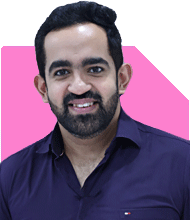Omkeshwar Singh | Answer |Ask -Follow
Head, Rank MF - Answered on Oct 27, 2021

I am 21 years old. I am currently in university and am already investing in equity mutual funds with the goal of wealth creation.
I am currently capped at a monthly SIP of 10k. My portfolio is:
| 1. Aditya Birla Sun Life Digital India Fund Direct Growth | Rs 1,500 |
| 2. Mirae Asset Emerging Bluechip Fund Direct Growth | Rs 2,000 |
| 3. Mirae Asset FANG+ FOF | Rs 1,000 |
| 4. Nippon India Pharma Fund Direct Growth | Rs 1,000 |
| 5. Quant Focused Fund DG | Rs 1,000 |
| 6. PGIM India Midcap Opportunities Fund DG | Rs 1,000 |
| 7. Quant Smallcap Fund DG | Rs 1,000 |
| 8. PGIM India Flexicap Fund DG | Rs 1,000 |
| 9. SBI Banking and Financial Services Fund DG | Rs 500 |
I have invested nearly Rs 2 lakhs in the above funds over the past two years with my portfolio's XIRR being 48.52 per cent.
I believe much of this is due to the current market highs.
What changes do you recommend to improve my portfolio in terms of securing current and future gains?
You may like to see similar questions and answers below
Omkeshwar Singh | Answer |Ask -Follow
Head, Rank MF - Answered on May 13, 2022
Omkeshwar Singh | Answer |Ask -Follow
Head, Rank MF - Answered on Feb 20, 2020
Hemant Bokil | Answer |Ask -Follow
Financial Planner - Answered on Apr 27, 2023
Ramalingam Kalirajan |8078 Answers |Ask -Follow
Mutual Funds, Financial Planning Expert - Answered on May 29, 2024
Ramalingam Kalirajan |8078 Answers |Ask -Follow
Mutual Funds, Financial Planning Expert - Answered on Apr 04, 2024
Ravi Mittal |543 Answers |Ask -Follow
Dating, Relationships Expert - Answered on Mar 06, 2025
Patrick Dsouza |1001 Answers |Ask -Follow
CAT, XAT, CMAT, CET Expert - Answered on Mar 06, 2025
Patrick Dsouza |1001 Answers |Ask -Follow
CAT, XAT, CMAT, CET Expert - Answered on Mar 06, 2025
Patrick Dsouza |1001 Answers |Ask -Follow
CAT, XAT, CMAT, CET Expert - Answered on Mar 06, 2025
Aamish Dhingra |10 Answers |Ask -Follow
Life Coach - Answered on Mar 06, 2025
Aamish Dhingra |10 Answers |Ask -Follow
Life Coach - Answered on Mar 06, 2025
Aamish Dhingra |10 Answers |Ask -Follow
Life Coach - Answered on Mar 06, 2025
Mihir Tanna |1031 Answers |Ask -Follow
Tax Expert - Answered on Mar 06, 2025
Jinal Mehta |98 Answers |Ask -Follow
Financial Planner - Answered on Mar 06, 2025
Radheshyam Zanwar |1337 Answers |Ask -Follow
MHT-CET, IIT-JEE, NEET-UG Expert - Answered on Mar 06, 2025






























